Discover the Joys of Sunset with Birds
Updated: Jan. 19, 2024
Don’t stop birding as the sun goes down. At sunset with birds, things are just getting started. Go on an owl prowl or look for nighthawks.
The early bird might catch the worm, but that doesn’t mean you have to be up at dawn to enjoy bird-watching. You can find birds throughout the day—sunup to sundown—and into the night. Not only can evening be the best time to catch certain species, but it’s also a great opportunity to be outside. Gorgeous sunsets with birds are a bonus.
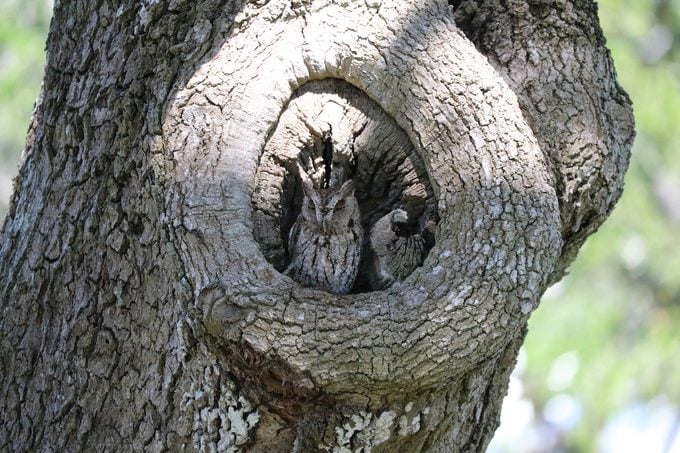
Sunset with Bird Songs
While not as boisterous as the sunrise chorus, there is a flurry of bird activity as the day turns to night. Much like in the morning, the American robin will probably be the merriest of songsters in the evening. Their cheery-up, cheery-oh call is a bit more welcome at sunset (at least for me), than it is during the predawn hour.
Bird songs provided by the Cornell Lab of Ornithology.
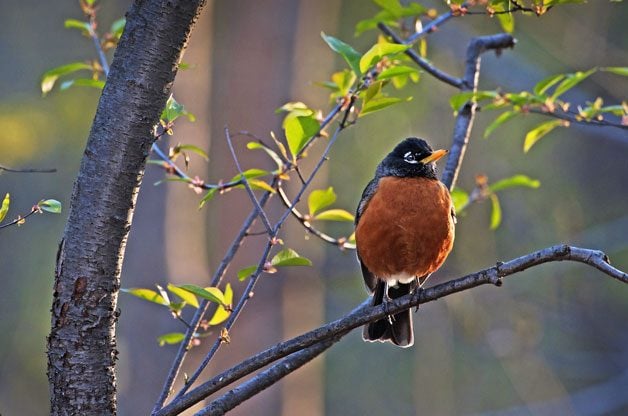
Birds aren’t the only evening callers. Listen for frogs and toads, and remember they don’t just ribbit or croak. Toads are especially noisy as the sun is setting. Their steady trilling is the background noise to many summer evenings.
Nightfall is the time for flying mammals, too. Bats can be spotted fluttering in the twilight hours as they feed on insects. Their silent and erratic flight is mesmerizing. As it gets dark, they can be hard to see. Try looking at city streetlights or over country ponds that offer a little glow for your best chance at spotting them.
Owl Prowls at Sunset
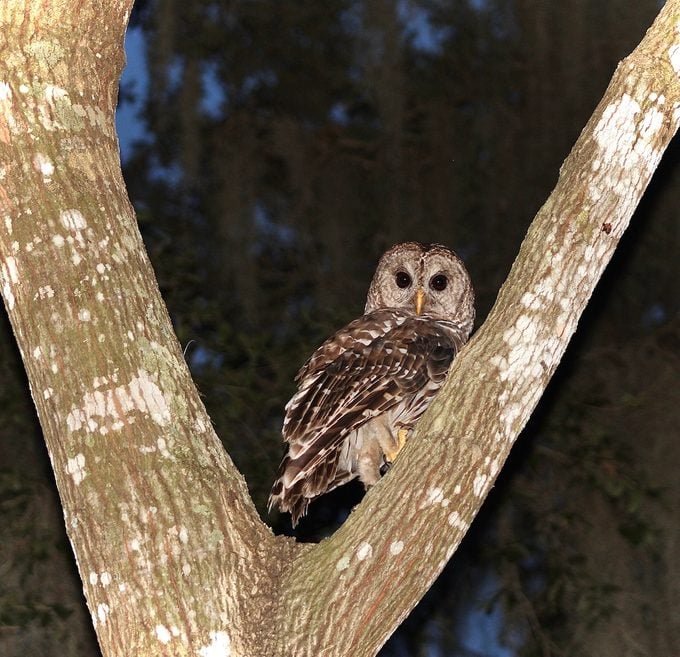
Sunset is when most owls are just waking up for their nocturnal rounds, so it’s a fantastic time to go on an owl walk. In many areas you can hear owls throughout the year, but late winter is an especially active period since it’s breeding season for several species. Late summer is also great for owl fans, because little owlets are testing their vocal chords for the first time.
You need to know what you’re listening for, though. For example, great horned owls have a classic hoot. Males and females will sometimes even hoot in unison, with the females giving a higher pitch hoot than males. But did you know that not all owls hoot?
Screech-owls are widespread with three species found throughout the U.S. Maybe you’ve heard their calls and never realized it. They make various sounds, including toots and trills, and a wailing reminiscent of a horse whinny.
Bird songs provided by the Cornell Lab of Ornithology.
While less widespread, barred owls can be locally abundant in the eastern U.S., across Canada, and into the Pacific Northwest. They have a highly recognizable who-cooks-for-you call.
Learn more about the owls of North America.
American Woodcock Evening Sky Dance
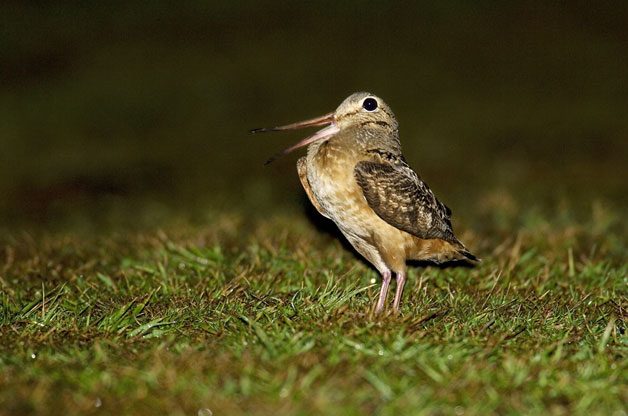
A classic sunset with bird tradition is that of the American woodcock’s sky dance. Woodcocks are portly shorebirds more at home in the upland woods than along the edge of the water. On spring evenings, males perform an elaborate territorial display in open areas adjacent to woods. They sit on the ground making their repetitive peent call. Then they explode skyward, their wings making a twittering flutter. They circle higher and higher before plummeting back to the ground. Then they repeat the entire process.
Learn more about bird courtship rituals.
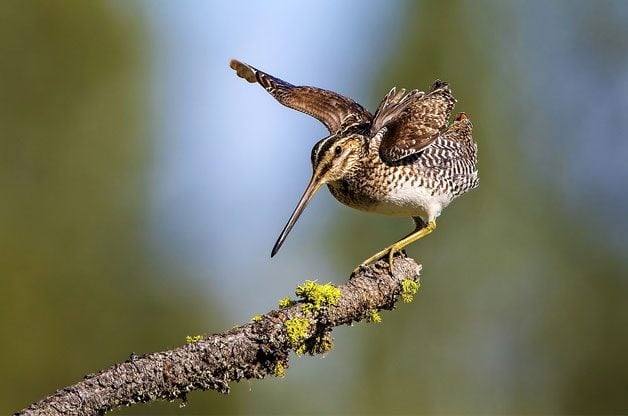
A bird related to the woodcock is the Wilson’s snipe. This shorebird also makes aerial flight displays as the sun goes down. The winnowing of the snipe has a hollow, haunting sound. The noise of the snipe is created by air flowing over their tail. Wilson’s snipe are widespread across the continent. Look for them in open wet areas, especially damp fields and marshy pond edges.
Sunsets with Chimney Swifts
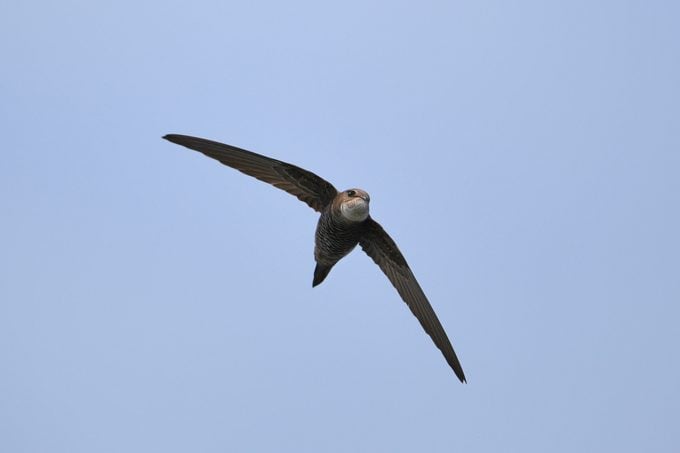
Historically, chimney swifts would roost in hollow trees, in caves and along cliffs, but these days, they are almost entirely dependent on human structures for their nighttime needs. After soaring around all day searching for flying insects to eat, swifts congregate in communal roosts, often in smokestacks and chimneys. You can watch as thousands of them fly into the structures at dusk, most notably during migration. In recent years the chimney swift has been declining as these open roosting sites become less common. In some instances artificial chimney swift towers have been installed to help the population.
The chimney swift is an eastern bird, but other similar species can be found in the West. They are less likely to roost in human structures, but that doesn’t mean they are any less impressive to see. For instance, the white-throated swift is a western bird found in mountains and canyons, and the Vaux’s swift resides in the Pacific Northwest.
Look for Nightjars at Night
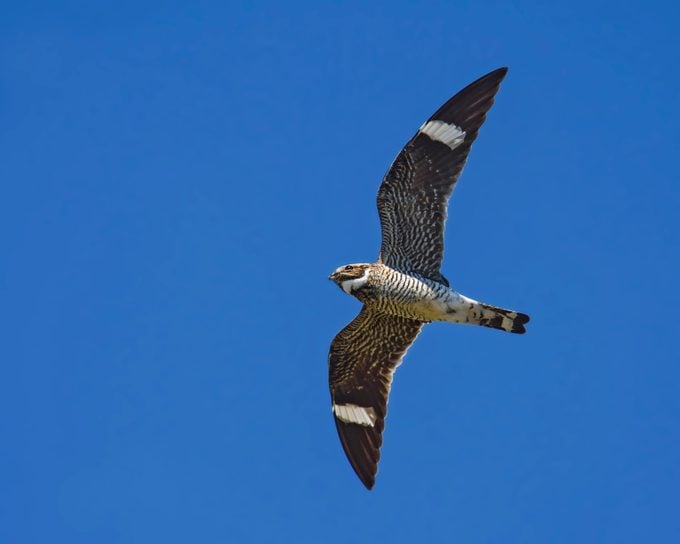
The nightjars include nighthawks, whip-poor-wills and their relatives. This group is sometimes referred to as goatsuckers, based on the myth that they come out at night to nurse from goats. Instead, this nocturnal group with ridiculously wide mouths feeds on flying insects they scoop out of the air.
Many, like the eastern whip-poor-will and chuck-will’s-widow, are named after their loud and repetitive calls. The whip-poor-will has added emphasis on the first and third syllable, while the chuck-will’s-widow is softest on the initial note.
Despite their name, you can occasionally see common nighthawks foraging during the day. They’re most active at night, though. Nighthawks have long, slender wings and a seemingly erratic flight pattern. You’ll be alerted to their presence by hearing a pzeent call that sounds similar to a woodcock’s. Watch closely as they zip and dart around, catching flying insects.
The dawn chorus can be a sight and a sound to behold, but giving sunsets with birds a try. You won’t be disappointed. From owls to woodcocks, and from swifts to nighthawks, there is a lot to see. And the best part is you don’t have to wake up early to catch all of the action.
Next, we asked the experts: where do birds sleep at night?
